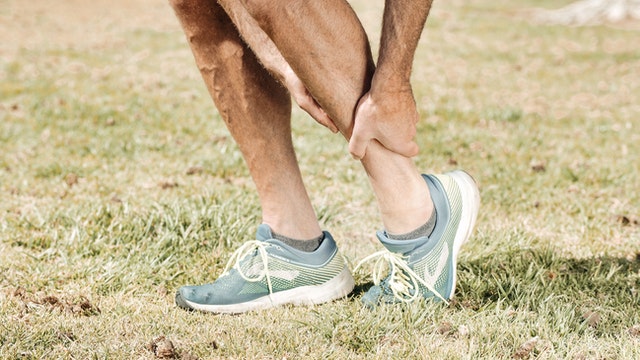Whether you’re an athlete or just a fitness enthusiast, your ankle is a critical joint that will feel the strain of your exercises. Be it jogging or weightlifting, you need your ankles for balancing.
Ankle pain can hamper your mobility, and you may not be able to go as hard as you want to.
From minor ankle sprains to chronic ones, here are some tips for managing ankle pain when on a workout program.

1. M.I.C.E.
MICE, standing for mobility, ice, compression, and elevation, is the most effective recommendation for managing ankle pain. Most people use the RICE method, where R stands for rest. But instead of complete rest, minimal movement (mobility) can help control swelling, provided the activity doesn’t aggravate the pain. The last part is essential: you shouldn’t do anything that can exacerbate the injury or cause further harm. For example, if walking becomes too painful, use a cane or crutches.
While propping up your ankle, apply ice for 10-20 minutes at a time. Compress the area with a bandage or brace to control swelling. While lying down, elevate your ankle above your heart using a pillow. This will also help reduce swelling.
2. Use good gear
If your ankle pain is minimal, you can still work out with it. However, wearing suitable protective gear is pivotal to preventing complications in your ankle. Every athlete must wear the right equipment, from suitable pads to fitted shoes.
Your shoe matters a whole lot when working out. The wrong shoe may even lead to ankle pain.
So if your shoes are of the wrong size or the sole has worn out, giving it a slope, get new quality ones.
3. Wear a brace
Bracing your ankle goes beyond wrapping it in a bandage. It’s advisable to wear a brace while the ankle injury heals or when the pain increases. The brace can be a pair of high-top sneakers, but it’s also important to wrap the ankles with tape.
If you do that, you can go on and train.
4. Mind how and where you land
The truth is, many athletes cause their own ankle pain because they land wrongly. Running or landing on uneven surfaces can also compromise your ankle.
Whether you jump while training, jog, or play basketball, landing with simultaneous contact is crucial to avoiding ankle injury or further pain.
5. Mind your weight
You see, ankle pain may frighten you from doing any further exercise. But the less active you get, the more chances you have to put on weight. And the more the leg carries, the more strain is imposed on the ankles. This will not help the pain.
Staying active, however minimal, is crucial to managing ankle pain. Physical activity helps to strengthen the ankle and improve mobility.
Get moving so your ankles don’t become stiff and weak.
6. Seek medical attention
You can use O.T.C. prescriptions like ibuprofen to manage ankle pain. But when it becomes too severe to manage through self-care, it’s advisable to see an orthopedic expert near you. An OrthoAtlanta orthopedic specialist can offer you specialized sports medicine or recommend ankle surgery according to your situation.
Wrapping up
Remember, even with the best of care, your ankle pain won’t typically disappear overnight. You might experience some swelling and stiffness for days, but ensure you remain minimally active and get enough rest. And see a doctor when it feels beyond your control.